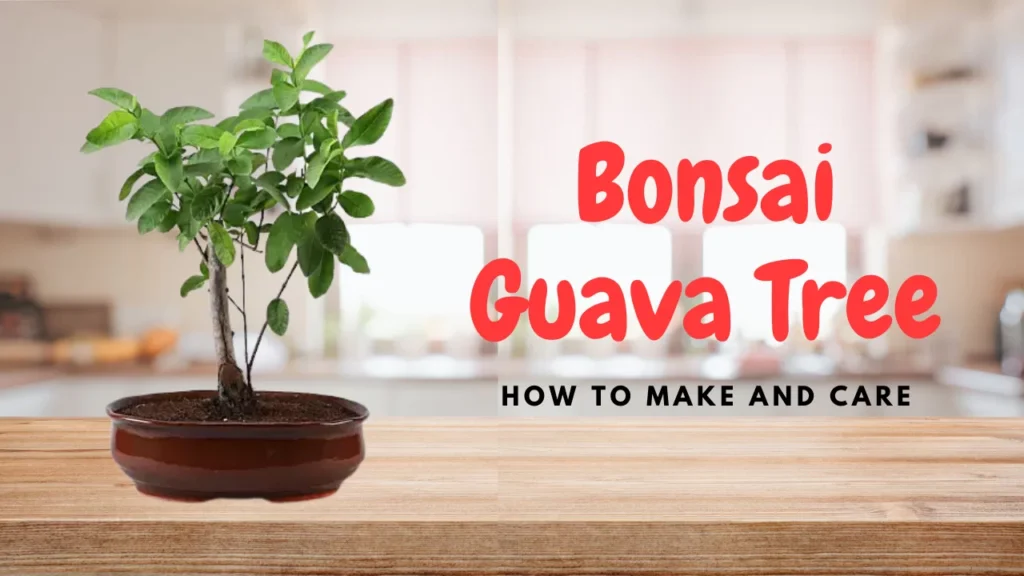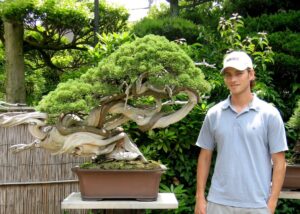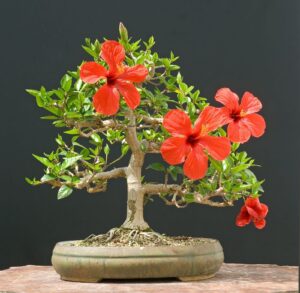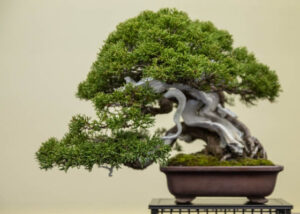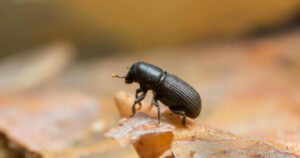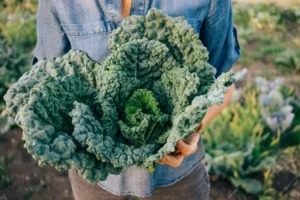Guavas are an age-old fruit that is still used by many all over the world. With multiple health benefits and nutrition to help boost your immune system, it happens to be a top-tier fruit. Now, add these advantages to an attractive bonsai and you have a multipurpose plant at your disposal.
But what should you do to grow a bonsai guava tree? In this article, we will walk you through everything that you should know about growing and caring for a bonsai guava tree.
Growing a Guava Bonsai Tree
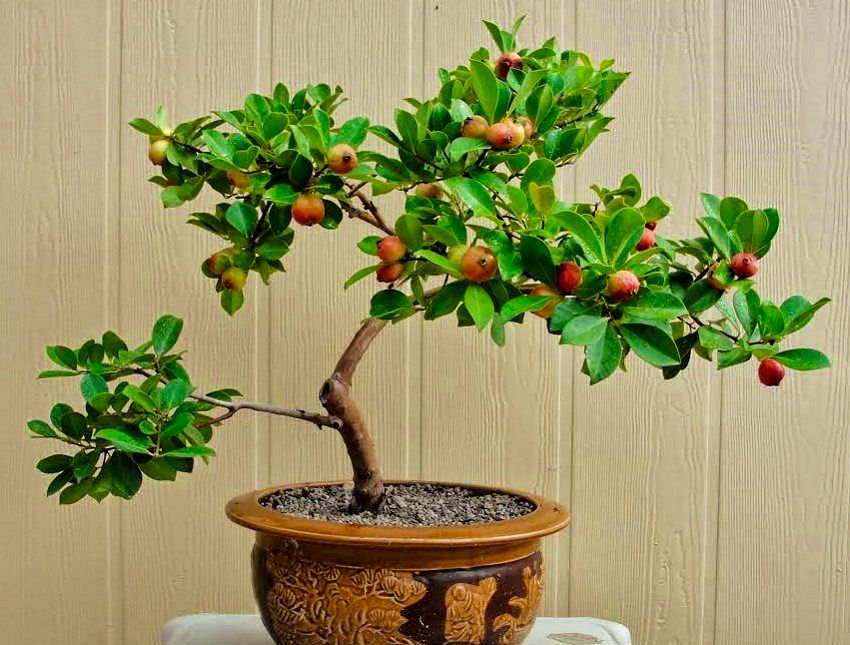
Growing a guava bonsai tree in your home is a great way to add some character to it. The process of growing one is quite simple and only requires a small number of basic supplies and regular care.
These supplies are the ones that are usually used in all sorts of bonsai and the gardening equipment can easily be availed at any local nursery. Other than tools, one needs to be particular about certain environmental aspects in the given case, which are mentioned in the following passages.
Here are a few tips that will help you grow a healthy, thriving guava bonsai tree.
Basic Requirements
Before going into too much detail, you need to sort out a few basic requirements for your plant before you make space for it in your home.
Location
The guava, as is common knowledge, is a tropical plant and hence needs to be placed outdoors in a location that gives them proper exposure to sunlight. If you live in a temperate region, you should keep your green friends indoors in winter.
The bonsai plants are not always frost-hardy and the sudden shift in temperature, along with the exposure to mist can harm your plants very swiftly.
Although make sure that the shift is something you accustom your plant to, if it is too sudden, the bonsai might lose its leaves. You can do this by starting with a slight shift in the amount of sunlight and temperature and then slowly moving it indoors for the best possible effect for your plant.
Bonsai Guava Tree Soil Requirement
For the bonsai guava trees, you need to use a high-quality soil mix. The mix you use should consist of one-fourth part each of Akadama, pumice, hummus, and demolition clay. Make sure that you only use a good quality commercial potting that has a high content of organic matter for growing guava in the pot.
Mixing the potting soil with natural compost or fertilizer helps in growing the bonsai guava tree well. To increase the fertility and draining capacity, mix the soil with organic manure and perlite or vermiculite.
Also, make sure that you mulch the plant with organic matter so that it retains moisture. It helps in insulating the roots for the winter too! The pH level of the soil, home to your bonsai, should be around 4.5 to 7.
Bonsai Guava Tree Watering
A guava bonsai needs a moderate supply of water but make sure that you don’t let the soil dry out between watering cycles because that might damage the root. Provide your plant with water regularly but make sure that you don’t do that when the weather changes to winter. During the fall, try and monitor the plant carefully and water only when the soil dries out or leaves will start to show signs of damage.
The water requirements are of utmost importance when the plant is flowering. Make sure you keep the soil in the perfect, moist condition so that the plant keeps developing healthy fruits for you.
Bonsai Guava Tree Temperature
The temperature requirements of your tiny guava tree range from 20 to 27.8 C during the germination phase. During the winter season, make sure that your plants do not have to endure temperatures of under 12 C. The most it can take is 10 C, but that will ruin your plant.
Guavas are not frost tolerant so if you stay in a place where the temperature falls below the range mentioned then it is better to keep the plant indoors until the temperature falls in the range that doesn’t harm your tiny friends.
Bonsai Guava Tree Pruning
Trees, big or small, naturally grow with apical dominance. This means that the central stem of the plant is more dominant than its side stems. The primary goal of the pruning process is to maintain the shape of the plant.
The previously mentioned points state that trees will concentrate most growth on the top and outer parts of their stems.
Bonsai Guava tree tends to grow lots of branches and twigs that’s why regular pruning is required to maintain the shape of the tree. Make sure that you keep removing the dead branches as soon as you see them or you might lose your bonsai to pesty diseases.
Also, remove crossed branches that are blocking the penetration of sun rays after the harvest or in the growing season.
Bonsai Guava Tree Wiring
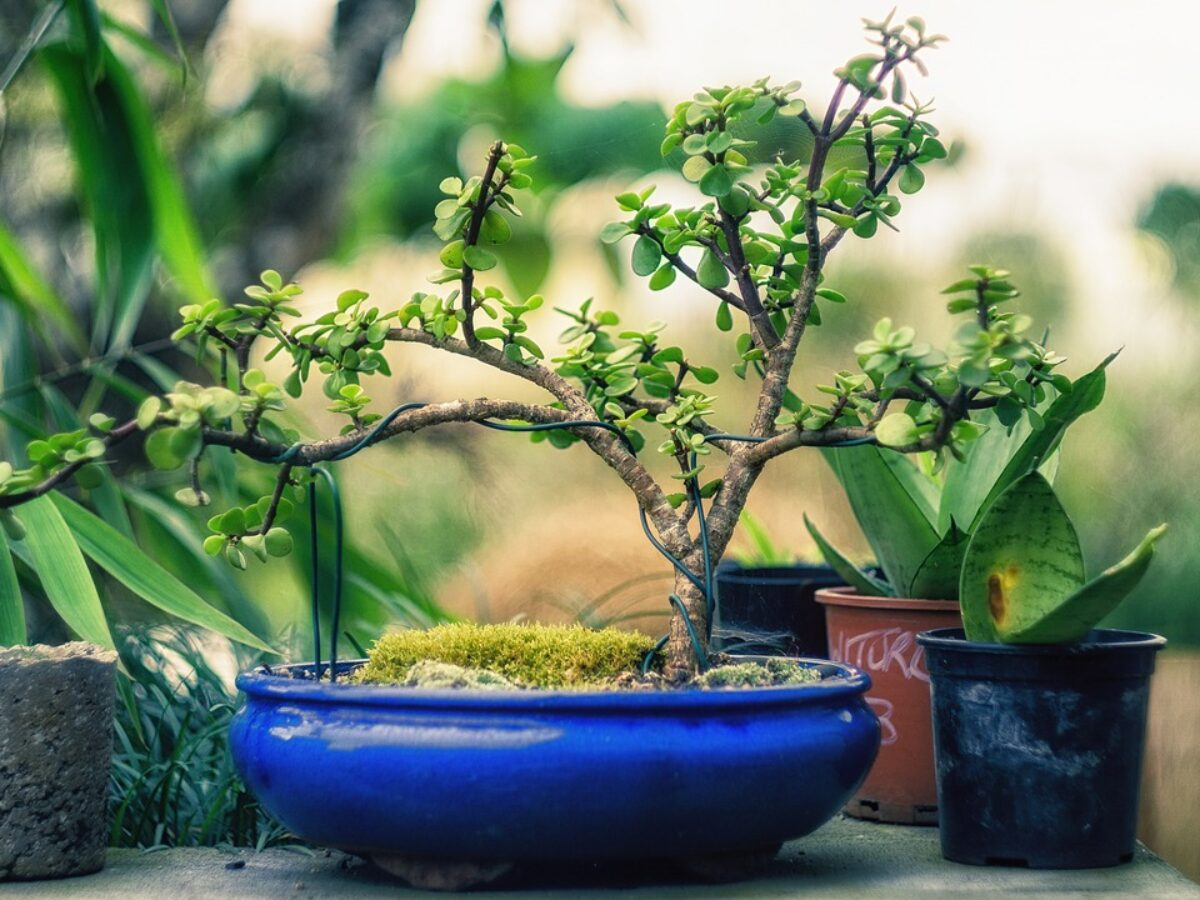
Another way to shape the tree is by wiring. When your plant matures, the branches become quite rigid and become really easy to break. Therefore, it is recommended that you wire the plant when it is young, using copper wire.
The suitable time for wiring is in winter and after defoliation. This helps your plant from being damaged by forced wiring.
Picking the Right Place
When picking the perfect place for your guava bonsai tree, make sure you plant it in a place with plenty of natural (indirect) sunlight. However, be careful that it does not have exposure to too much direct sunlight.
Too much time under the direct sun can destroy the plant and cause it to dry out. Instead, place the tree near a window that gets some natural but indirect light.
Planting Your Guava Bonsai
One of the most important steps in growing a guava bonsai tree is choosing the right pot for your tree. A 5-inch diameter for the pot is considered a good size for a guava bonsai.
Also worth noting is that you should keep the soil slightly moist when you plant your tree. Bonsai plants need to be planted in pots that will help them hold their own weight and supports them when they try to stay upright and not fall over.
In case you’re using a traditional floral pot, make sure it has drainage holes at the bottom of the pot and no holes on top of the soil. Another a little reasonable and inexpensive option is a plastic plant container with drainage holes punched throughout the bottom.
Planting your bonsai in water-retaining soil will help prevent your tree from rotting, even if you forget about it for a few days.
Taking care of your Guava Bonsai Tree
Bonsai plants are sensitive and require love and attention of the highest sort. Your delicate beauties might have “tree” in their name but they are just ornamental beauties that should be taken care of in the most nurturing manner.
Here is everything you need to know about taking care of your Guava Bonsai Tree:-
Choosing the right fertilizer
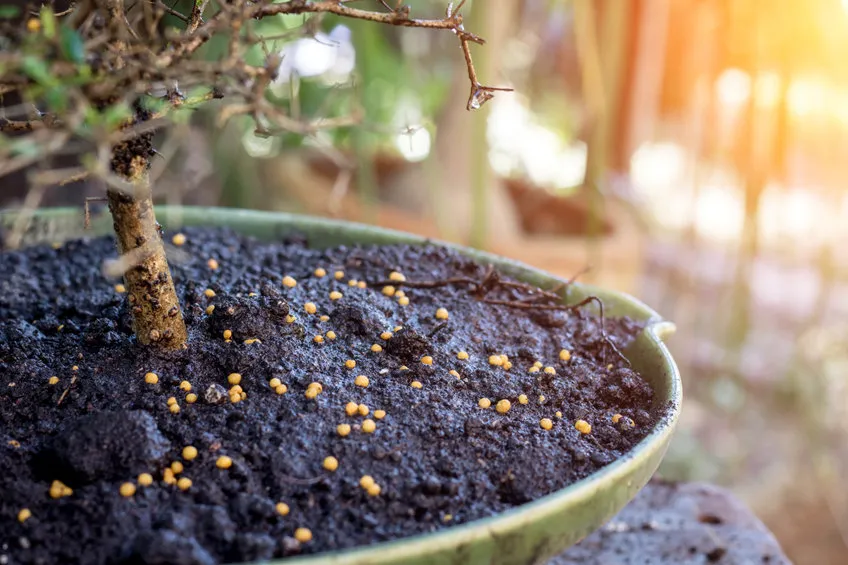
The Bonsai Guava tree needs feeding during the growing season which happens to be from spring to autumn. For best results, use balanced liquid fertilizer. Avoid feeding too much fertilizer to your plant in winter or when the tree is not growing or if it is recently repotted. It might result in damage to the roots.
Also, the shallow roots of the plant tend to absorb the nutrients and water quickly hence it only needs fertilizing every 3 months with an organic, granular fertilizer. When the guava bonsai is young, fertilize it with 6:6:6:2 [N P K Mg], because the composition speeds up the growth of the tree. But remember to change the composition to 8:3:9:2 [N P K Mg] once your bonsai starts to bear fruit.
When to Repot
Regular repotting is required to prevent your bonsai from being pot-bound. Pot-bound is when a plant gets too large for its pot and the roots circle inside the pot, and the plant’s growth becomes restricted.
If your plant seems to be drying out more quickly than it used to but in every other way seems healthy, they are probably pot-bound. Your bonsai guava tree should be repotted every two years and it should be in spring.
When you go on and repot the plant, trim the roots so that plant can fit in the container. To stimulate the growth of the roots, you need to prune up to one-fourth of the root mass. Also, you should always plant the bonsai in a pot bigger than the last one, never the one which is the same size as the previous one.
Never expose to too much cold
The temperature requirements of your tiny guava tree range from 20 to 27.8 C, because it happens to be a tropical beauty. In the winter, it cannot endure a temperature range lower than 10 to 12 C because that will end up weakening the roots of your plant and might destroy your little plant.
Guavas are not frost tolerant so if you stay in a place where the temperature falls below the range mentioned then it is better to keep the plant indoors until the temperature falls in the range that doesn’t harm your tiny friends.
To protect the tree from frost, cover the tree with sheets or a tarp. You need to remember that bonsai, even when they are old, happen to be a little fragile.
Pests and Disease Prevention
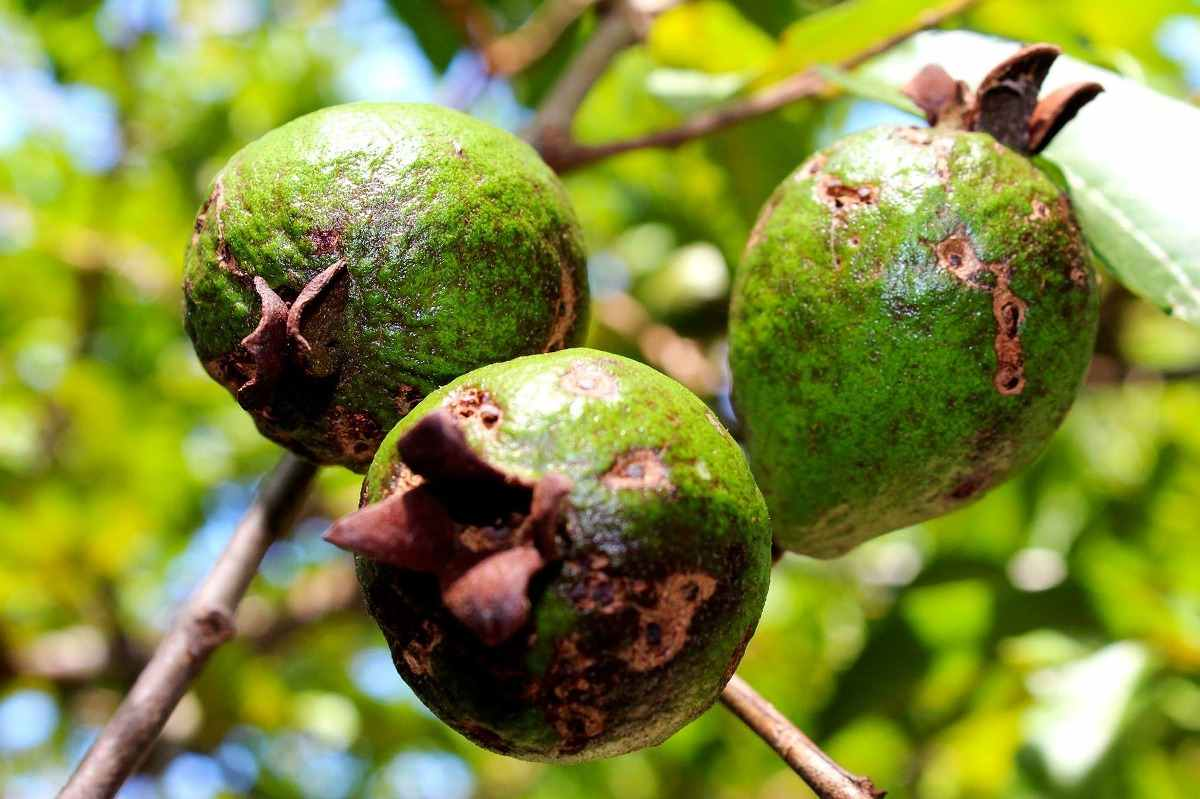
You need to protect your trees from pests and disease and this is possible only through careful maintenance and regular inspection. Although the miniature of a tough tree, the guava bonsai can become an easy target for common pests. Mealybugs, guava scale, whiteflies, fruit flies, and thrips affect the tree. To prevent this from happening, you can use organic pesticides to control the said pests. Too much chemical can also cause damage to your leafy friend.
When affected, the guava plant is laden with rust which occurs in very warm weather and high humidity. Besides, anthracnose and leaf spot affects the plant in wet humid weather and spread through splashed water. One can avoid all this only by using proper methods of irrigation.
Common Problems Guava Fruit Bonsai Face
Over-watering/Under-watering
Your green ornament sustains life when by absorbing water through its roots. If you let the soil dry up for far prolonged periods, it can lead to the premature death of your bonsai tree.
On the other hand, if you are an overeager caretaker, working on a watering schedule, you can suffocate their trees with too much water, because the roots thrive when they get air to breathe.
Fertilizer needs
Guava bonsai trees are quite reliant but might be very sensitive to fertilizer. When young plants live in small shallow pots with a said quantity of soil that absorbs nutrients very quickly and if the fertilizer is too little, the plant will get hungry very soon.
But, you need to be careful that you don’t overload your bonsai with fertilizer, it will damage the plant too.
Too Much/Too Little Sunlight
A bonsai needs lots of light to stay healthy when it is little. However, too much or too little (direct) light can lead to numerous bonsai tree problems. Like understanding the watering needs of your plant, constant monitoring is how you understand the sunlight needs.
When your tree gets too much sunlight, especially when it is under the direct sun, it can burn or overheat and end up turning the leaves yellow or crispy. On the other hand, if there is no or little light, a tree begins to look wilted and weak over time.
FAQs
Is growing a guava fruit bonsai as easy as growing any other bonsai?
No. Growing a miniature version of trees is no easy feat in itself and when you want to add fruits to it, it becomes even harder. Although the guava bonsai is a little sturdier than most other fruit bonsai, it is still hard to grow one, especially when your green friend is young.
Are guava bonsai plants expensive?
Bonsai trees are miniature versions of big trees that grow in small pots. Although bonsai fruit trees are expensive, just the root ball of a guava bonsai does not cost a lot, the care taken over the years might cost you a little.
How often should you fertilize guava bonsai plants?
The Bonsai Guava tree needs fertilizing during the growing season which happens to be from spring to autumn. Other than this, once they are grown, you have to fertilize them every 3 months.
Conclusion
Of course, guavas are a part of your fruit salad and snacks, but also can help decorate your house and garden. If you love the plant, you need not have a big garden where you can grow an entire tree, you can just fulfill your wishes by getting yourself a fancy guava bonsai tree and make your home prettier and happier.
Let us know in the comments below if you have any extra questions related to guava bonsai trees and we’ll be happy to assist you!
Related Articles
- Top 10 Bonsai Tree for Sale in India
- Unique Bonsai Gifts: Perfect for the Plant Enthusiast
- Bonsai Tree in a Terrarium – An Ultimate Guide To Build Bonsai Terrarium.
- Redwood Bonsai Care Guide: How to Grow, and Bonsai For Sale
- Growing Kale Indoor From Seeds With LED Grow Light
- Best Bonsai Plants to Grow in Summer
